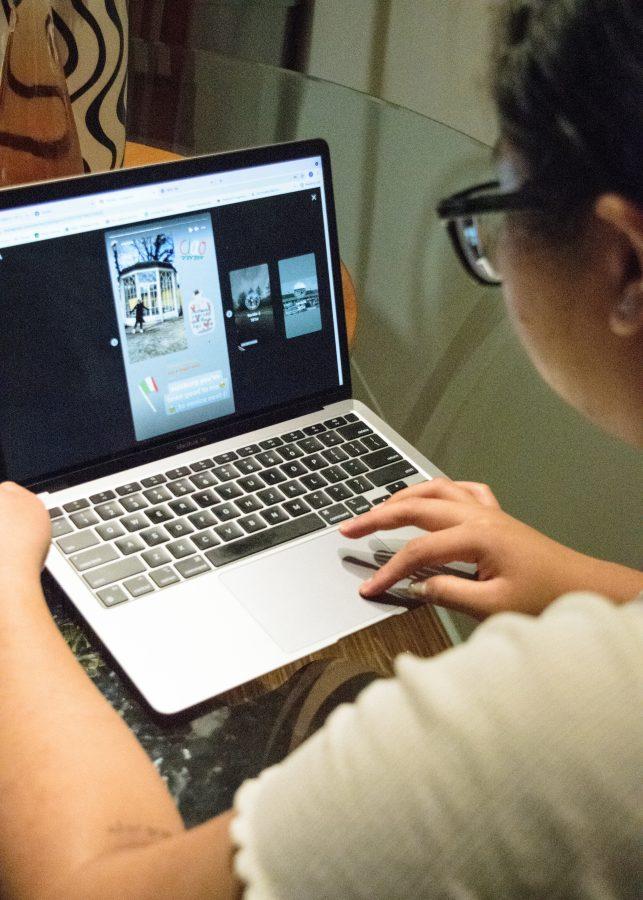The core of education involves many key aspects. Textbooks, a classroom of some kind, and an educator are key aspects of completing an education. Whether it’s second grade or graduate studies, these aspects are critical in the comprehension of new material in a school setting. In the modern era, having an internet connection with a working laptop is critical to the completion of your degree, from high school onwards. As such, technology inequality is a major issue that plagues many university students. As a university that serves many low-income families, technology inequality plagues many UMass Boston students.
In the modern era, technology is at the core of our society; from everyday life to social interactions to the way we earn income, life without functioning technology would lead to the collapse of our society as we know it. As such, UMass Boston, as our primary educating institution, has a direct responsibility to ensure that we as students have access to the technological resources that allow us to complete our degree to the best of our ability. And although the university is not able to fight every technological inequality that plagues its student body, such as quality of internet connection and reliable access to technological gadgets such as a mouse and USB storage, the university must attempt to bridge the technological gap that currently exists in the student body.
According to USAfacts.org, the U.S. Census Bureau did a survey with several other agencies to see the technology inequality faced by students across the nations. The report found that “of the 52 million households with children present, 74 percent always had access to a computer for educational purposes in September and 16 percent had access most of the time. An additional eight percent, or 4.4 million households, had a computer available sometimes, rarely, or never. In households where a computer was always available, 60 percent received devices from the child’s school or school district.” (1) These numbers are unacceptable, particularly when it relates to a huge university such as UMass Boston.
It may surprise you to find out that the university has many resources for students who face technological inequality. An unfortunate reality is that the university is not making these resources widely known to its student body. There are several places on campus where students can rent out Chromebooks for various time periods. I would encourage students to utilize these services to their fullest extent. If you are in need, the university does have resources to assist you. The university provides the link to borrow a Chromebook at the bottom of the Campus Currents email. At the very bottom, it reads, “Request a free loaner Chromebook at umb.edu/chromebookloan”; clearly this is much less important than the “Campus Master Plan” which is featured prominently in the email. The irony of having a safe space gathering featured at the top of the email and having the Chromebook loaner program shoved at the end of the email tells you all you need to know. One is empty, performative anti-racism, the other is definitive action that fights technological inequality. It is clear which the university prioritizes. The only time the university sent out an email specifically announcing this Chromebook loaner program in an email by itself was in late January of this year.
I am calling upon the university to strongly publicize this information because it is quite clear that students are not aware of this reality. For more information, please check out: umb.edu/chromebookloan and https://www.umb.edu/it/labs/laptops.
The global COVID-19 Pandemic has ravaged the United States economy, and the working class of the United States continues to suffer. Income and wealth inequality has only increased as a result of the economic recession and technological inequality continues to be an underreported byproduct of income inequality. From registering for classes to accessing homework assignments from home, the modern college experience relies heavily on students having regular, constant, consistent, strong connections to the internet coupled with a modern, fast-responding laptop with good battery life and good storage. The unfortunate reality remains that many low-income students cannot meet this basic technical requirement as a result of personal financial situations, and it is the responsibility of the university to correct the gap in technology inequality faced by its students, particularly its inner-city commuting students.
Technology inequality is not the only inequality faced by students that the university fights. Those facing food insecurity should reach out to the U-Access: https://www.umb.edu/life_on_campus/uaccess. There are many organizations on campus that fight for and provide students with resources so if you should be in need, reach out to the university and explain your need. Chances are that they can guide you to resourceful help, if not on campus then possibly remotely or in the surrounding area. The university does have resources to help its underprivileged students, however it seems they have placed the responsibility on the student to go ahead and find said resources.
-
https://usafacts.org/articles/internet-access-students-at-home/

